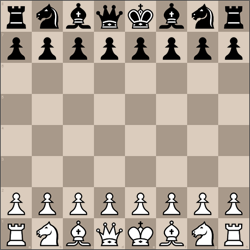< Prev Index Next >
 Chess 17 Mar 1918, Sun The Los Angeles Times (Los Angeles, California) Newspapers.com
Chess 17 Mar 1918, Sun The Los Angeles Times (Los Angeles, California) Newspapers.com
Chess.
Game No. 86—Ruy Lopez
Played in a simultaneous at the Pacific Chess Club on Washington's Birthday [February 22, 1918]. Mr. Testa, the only winner, played a good uphill game. Another will be given on March 28.
Stasch Mlotkowski (white) vs. Mor Weiss Testa (black)
Ruy Lopez: Cozio Defense
Submitted to chessgames.com on 05/06/2025
(a)—This move constitutes the Ruy Lopez. This is my first published game in which I adopted this opening, and I have never played it in a game of any importance, with one possible exception and that is in 1904 after the conclusion of the St. Louis tournament. Max Judd arranged that Jaffe and I should play three games for a small prize to the winner of each. He won the first and I the next two. In the second of those games I adopted the Ruy. I have never like it much, although it is the opening most in vogue at present and has been for a long time.
(b)—Steinitz thought P-B3 best. The Handbuch gives the text move as best.
(c)—N-B3 is usual here, but the move made is a good one and leads to a livelier game.
(d)—This, of course, is a mistake, losing a pawn, but, as often happens, White's positional advantage is diminished after he captures.
(e)—QxNP was theoretically safe, but would have given White such a hard game that under the circumstances it was thought best to pass the gain up, as too much time cannot be used on any one board in a simultaneous and Black, by replying Q-R4, could make it extremely uncomfortable.
(f)—N-B2 was more conservative.
(g)—Rather QxN.
(h)—I had calculated on R-K3 here and thought the move made merely desperate.
(i)—Failing to give the position proper consideration White loses. There is a win here by B-KB1, for if QxBch, K-R2 and Black has no safe check thereafter.
(j)—Testa's long check, which I had missed and upon which he no doubt relied when playing 30—… RxP. The game is now over, for if P-KK3, RxBch. When the queen gets to knight 6 Black has two exchanges ahead and White has a bad position.























